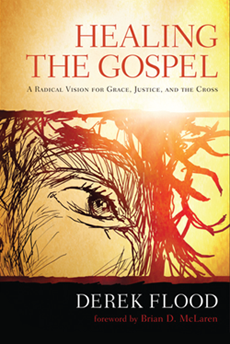The Talmud on Substitutionary Atonement
Thursday, December 04, 2008
A reference in the TDNT lead me to a great book called Kommentar zum Neuen Testament aus Talmud und Midrasch which translated means "Commentary to the New Testament from the Talmud and Midrash" (Hermann Strack & Paul Billerbeck, Munich: C.H. Beck, 1926). The Talmud is a massive multi volume work that catalogs the "oral law" (Mishnah) which Jews believed God gave to Moses along with the written law. The oral law was used to interpret the written law (similar to how we use a Bible commentary), but seen as equally authoritative to Scripture. As the title indicates, the book uses the Talmud to gain an accurate idea of Jewish thought as it applies to New Testament themes.
For example I was researching Paul's statement in Gal 3:13 that Christ had "become a curse for us". According to the Kommentar zum Neuen Testament aus Talmud und Midrasch (from now on KNTTM) the the idea that a person could become an atonement for another by bearing their suffering was a common one in the ancient Jewish Synagogue (KNTTM vol 3, p 261). Paul himself in Ro 9:3 wishes that he could become a curse for the sake of his people the Jews. The KNTTM says that "I will be an atonement for so and so" was a common expression in ancient Judaism. For example the Babylonian Talmud says that when the high priest was mourning his wife the people would say "we are your atonement!" (Sanhedrin 2:1). Rabbi Ishmael (135AD) says "I will be an atonement for the children of Israel" (Talmud Nega'im 2:1). The KNTTM gives numerous other examples of this type.
In 1st Kings a prophesy is given over King Ahab "This is what the LORD says: 'You have set free a man I had determined should die. Therefore it is your life for his life, your people for his people." (1 Ki 20:42). Ahab dies in battle (ch 22) but the Israelites don't. Commenting on this in the Jerusalem Talmud R. Jochanan (279) says in the name of R. Shimeon (150) that “That single drop of blood that flowed from that righteous man atoned for all of Israel” (Talmud Yerushalmi: Sanhedrin 11, 7, 30c). Commentators disagree as to whether he is referring to the future king Josaphat who was also wounded or the prophet who was socked in the law in chapter 20. What is important here is the idea of a righteous one through suffering atoning for the sins of the people.
Particularly interesting is this passage from 4th Maccabees which refers to the martyrdom of Eleazer and the Maccabeean youths, "The tyrant was punished, and the homeland purified -- they having become, as it were, a ransom for the sin of our nation. And through the blood of those devout ones and their death as an atonement, divine Providence preserved Israel that previously had been afflicted." (4 Macc 17:20-22) Along these lines Martyrdom is especially regarded in the Talmud as atoning for the people (KNTTM vol 2, p. 275)
The point here is not that these passages are authoritative in any way, but simply that they reveal how the the idea of one bearing the sins of many was prevalent in the Jewish imagination at the time of Christ. It's challenging to work through all these quotes, but what seems to emerge is not so much a legal formula so much as a sentiment similar to when people say things today like "take me, but let them go!"
What's interesting is that with such a prevalent notion of vicarious suffering as a means of atonement, you would think that the Jews at the time of Jesus would have expected a suffering messiah, but they did not. Jews at the time of Jesus believed that the Messiah (who they expected to be a human king) would come in glory and usher in God's kingdom. He would be untouchable. This is pretty much a parallel to how most Christians envision the 2nd coming. After the time of Jesus, as the idea of the eternal soul became widespread, some rabbis conceived of a suffering Messiah who is ever present with suffering people here. One Midrash tells how God hid the light of the world under his throne after he used it to create the world. When Satan asked him who the light was for, God answered "For those who are ashamed and hide their faces". Satan then asks to see the Light who is the pre-existent Messiah, and when he sees him Satan falls on his face shaken with fear saying "Truly this is the Messiah who will hurl be into Gehenna, destroy death forever, and wipe the tears from each face." echoing the words of Jer 31:9 (Midrash Pesikta Rabbati 36 -161a).
Note that while the Messiah is seen here as the comforter, and elsewhere as co-suffering with Israel, this is not viewed as atoning. The Targum Jonathan was an Aramaic translation of the Hebrew Bible which predates Christ. In its very free-form translation we can see that Isaiah 53 is clearly seen as messianic,
"Behold, my servant the Messiah shall prosper, He shall be exalted and extolled, and He shall be very strong. " (Isa 52:13 Targum Jonathan)
but all reference to the messiah suffering have also been changed, so that the suffering and shame are applied the people not the servant,
"Therefore He shall pray for our sins, and our iniquities for His sake shall be forgiven us; for we are considered crushed, smitten of the Lord, and afflicted." (Isa 53:5 Targum Jonathan)
So we can see that the idea of redemptive suffering was a deep part o Jewish thought leading up to the time of Jesus, but at the same time oddly disassociated with the messiah. Mosses, David, and the Prophets are all seen as bearing the sins of the people. So why the disconnect with the Messiah? The only answer I can find is that it has to do with what they expected the time of Messiah would bring which was a time were there was no suffering at all. I'd like to see that happen too, but in the meantime I'm glad that God suffers with us and comes among us in our need.
For example I was researching Paul's statement in Gal 3:13 that Christ had "become a curse for us". According to the Kommentar zum Neuen Testament aus Talmud und Midrasch (from now on KNTTM) the the idea that a person could become an atonement for another by bearing their suffering was a common one in the ancient Jewish Synagogue (KNTTM vol 3, p 261). Paul himself in Ro 9:3 wishes that he could become a curse for the sake of his people the Jews. The KNTTM says that "I will be an atonement for so and so" was a common expression in ancient Judaism. For example the Babylonian Talmud says that when the high priest was mourning his wife the people would say "we are your atonement!" (Sanhedrin 2:1). Rabbi Ishmael (135AD) says "I will be an atonement for the children of Israel" (Talmud Nega'im 2:1). The KNTTM gives numerous other examples of this type.
In 1st Kings a prophesy is given over King Ahab "This is what the LORD says: 'You have set free a man I had determined should die. Therefore it is your life for his life, your people for his people." (1 Ki 20:42). Ahab dies in battle (ch 22) but the Israelites don't. Commenting on this in the Jerusalem Talmud R. Jochanan (279) says in the name of R. Shimeon (150) that “That single drop of blood that flowed from that righteous man atoned for all of Israel” (Talmud Yerushalmi: Sanhedrin 11, 7, 30c). Commentators disagree as to whether he is referring to the future king Josaphat who was also wounded or the prophet who was socked in the law in chapter 20. What is important here is the idea of a righteous one through suffering atoning for the sins of the people.
Particularly interesting is this passage from 4th Maccabees which refers to the martyrdom of Eleazer and the Maccabeean youths, "The tyrant was punished, and the homeland purified -- they having become, as it were, a ransom for the sin of our nation. And through the blood of those devout ones and their death as an atonement, divine Providence preserved Israel that previously had been afflicted." (4 Macc 17:20-22) Along these lines Martyrdom is especially regarded in the Talmud as atoning for the people (KNTTM vol 2, p. 275)
The point here is not that these passages are authoritative in any way, but simply that they reveal how the the idea of one bearing the sins of many was prevalent in the Jewish imagination at the time of Christ. It's challenging to work through all these quotes, but what seems to emerge is not so much a legal formula so much as a sentiment similar to when people say things today like "take me, but let them go!"
What's interesting is that with such a prevalent notion of vicarious suffering as a means of atonement, you would think that the Jews at the time of Jesus would have expected a suffering messiah, but they did not. Jews at the time of Jesus believed that the Messiah (who they expected to be a human king) would come in glory and usher in God's kingdom. He would be untouchable. This is pretty much a parallel to how most Christians envision the 2nd coming. After the time of Jesus, as the idea of the eternal soul became widespread, some rabbis conceived of a suffering Messiah who is ever present with suffering people here. One Midrash tells how God hid the light of the world under his throne after he used it to create the world. When Satan asked him who the light was for, God answered "For those who are ashamed and hide their faces". Satan then asks to see the Light who is the pre-existent Messiah, and when he sees him Satan falls on his face shaken with fear saying "Truly this is the Messiah who will hurl be into Gehenna, destroy death forever, and wipe the tears from each face." echoing the words of Jer 31:9 (Midrash Pesikta Rabbati 36 -161a).
Note that while the Messiah is seen here as the comforter, and elsewhere as co-suffering with Israel, this is not viewed as atoning. The Targum Jonathan was an Aramaic translation of the Hebrew Bible which predates Christ. In its very free-form translation we can see that Isaiah 53 is clearly seen as messianic,
"Behold, my servant the Messiah shall prosper, He shall be exalted and extolled, and He shall be very strong. " (Isa 52:13 Targum Jonathan)
but all reference to the messiah suffering have also been changed, so that the suffering and shame are applied the people not the servant,
"Therefore He shall pray for our sins, and our iniquities for His sake shall be forgiven us; for we are considered crushed, smitten of the Lord, and afflicted." (Isa 53:5 Targum Jonathan)
So we can see that the idea of redemptive suffering was a deep part o Jewish thought leading up to the time of Jesus, but at the same time oddly disassociated with the messiah. Mosses, David, and the Prophets are all seen as bearing the sins of the people. So why the disconnect with the Messiah? The only answer I can find is that it has to do with what they expected the time of Messiah would bring which was a time were there was no suffering at all. I'd like to see that happen too, but in the meantime I'm glad that God suffers with us and comes among us in our need.





